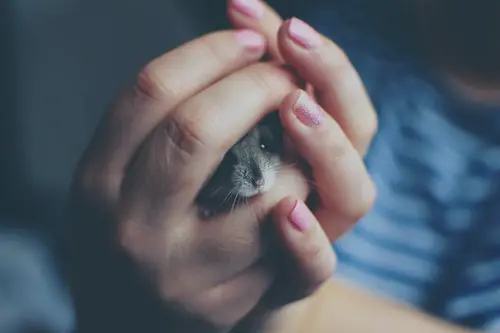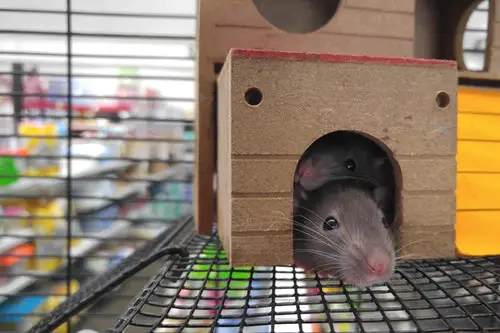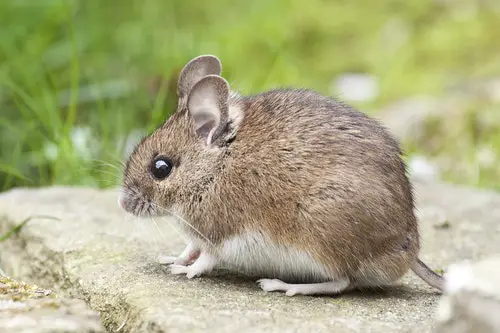Have you ever wondered or asked yourself ”Why does mouse have fur?” It is actually an interesting question with lots of incredible answers. A mouse is a small, furry creature, between 3 -18 cm in length, with large rounded ears, pointed nose and a tail as long as it’s whole body. They are generally smaller than rats, with smaller feet. They are nocturnal creatures; primarily active at night. Mice live in narrow underground burrows(in forests, grasslands) and in buildings.
Mice are mammals, with the following scientific classification:
Kingdom: Animalia
Phylum: Chordata
Class: Mammalia
Order: Rodentia
Suborder: Myomorpha
Family: Muridae
Subfamily: Murinae
Genus: Sigmodontinae
Specie: Various species including the Mus musculus( house mouse), Apodemus sylvaticus, Peromyscus maniculatus etc.

A mouse is a mammal basically because it has fur, sweat glands, mammary glands, three middle ear bones: hammer(malleus), anvil(incus)and stapes(stirrup), specialized teeth, a four-chambered heart, warm-blooded metabolism, and a brain covering called neocortex. All mammals have fur; those who are said not to have, like the naked-mole rat, are so-called because their hair is sparse when compared with that of other mammals.
The presence of fur/hair is one of the major characteristics that distinguish mammals from other vertebrates i.e, it is a defining characteristic of mammals(whether the fur present would be called hair depends on the mammal involved). Coats refer to the fur on the body of mammals.
Mice make use of their fur in their day-to-day activities, hence the evolutionary importance. The fur on their bodies and tails however, have functions that vary from those on their face; generally referred to as whiskers or vibrissae ( singular: vibrissa). Let’s consider the various fnctions of the fur on the body of mice.
The fur of mice serves as a protective and waterproof organ. Mice have stiff hairs on their backs, they use it for defence against predatory attacks and activities. The different coats on the body of mouse include: guard hairs, under hairs and whiskers. The guard hairs usually serve as protective hairs; they protect the skin of the mouse from ultraviolet rays of the sun, from adverse wind conditions, unfavorable climatic conditions etc.

The guard hairs depending on their denseness, stiffness and length, reduce the effect of cuts, scrapes, bruises and grazes. They also prevent moisture from reaching the skin through the help of special glands that secrete oil to the skin and hairs, making them water-proof.
The fur of mice is also very crucial in thermoregulation. The thermoregulation system in mice serves as a control system that’ll remove body heat in hot temperatures and retains body heat in low temperature conditions. It provides insulation from extreme temperature conditions. This is usually the function of the under hairs. Fur on the body of mouse help them trap air.
In mice that have two or more types of coat color, the lighter color reflects sunlight thereby keeping them cool, while the darker ones absorb heat thereby making the mice warm. In cold temperature conditions, the fur helps in insulation by conserving body heat.
Mice are small mammals; easy targets for predators. However, their fur serves as an adaptive defense mechanism, also called cryptic coloration that helps animals to disguise their presence and blend in with their surroundings. The camouflage helps to make their identity, location and possibly their movements inconspicuous. The coat color of mice help them to blend with their surroundings.
They have the same color of their surroundings, it therefore helps to conceal them from their predators. The predator would have to carefully look out for the prey to be able to distinguish between the prey and surroundings of the prey. This is what is considered as camouflage.
The fur of mice is also used in counter shading. Counter shading is exhibited by most mammals, and in addition to self-shading masks their identity and location in their habitat. Generally mice exhibit counter shading; the color of the coat of mouse is usually darker on the upper side(dorsal) of the body, while the underside is usually lighter. It makes them less conspicuous and helps them blend more with their surroundings. In fact, we can say it is a method of camouflage in mice.

The fur of mice also plays a role in sexual recognition and arousal. In definition, generalized arousal (in relation to sense of danger, hunger, fear or other social encounters) is greater in an animal that is more motorically active, more alert to sensory stimuli and more emotionally reactive.
Among the types of coat of mouse is the vibrissae( whiskers). Whiskers are also called tactile hair. They are a type of extremely sensitive hair(because they are closely connected to the nervous system; they have an identifiable represent ion in the somatosensory cortex, and are richly supplied with nerve endings) found above the eyes, on the cheeks, jaw, and under the snout, that act as a sensory organ in mice.
They have their own characteristic features: they are lengthy(longer than other hairs on the body of mice), thick(they are about two times thicker than other body hairs), with hair follicles that are saturated with nerves, have deeper hair roots and a representation in the somatosensory cortex that is identifiable. Their function makes them to be richly supplied with nerve endings. Vibrassae have their own specific functions.
They are specifically used for tactile sensing (measurement of the parameters of contact between the whiskers and an object). Mice are generally farsightedness mammals, so their whiskers offer them a great deal of protection, help their functioning and helps them in life-preservation and sustenance. Their whiskers help them scan their environment and navigate in the dark (being primarily nocturnal animals).
They use it for object recognition and location;they use it to denote the dimensions(size, shape, length etc) and feel of objects around them. It gives the mouse information about air movements, pressure, food, water current (since they can stay in water, but for limited time though), wind direction on land and anything around them or that they come in contact with.

The four major types of vibrissae in mice are the suborbital, mystical, mandibular and genal vibrassae. Mystacial vibrissae are divided into two sub-groups:macrovibrissae and microvibrissae. Macrovibrissae: large movable tactile hair, usually grows from the sides of the nostrils, used for spatial sensing. Microvibrissae: Small non motile tactile hair usually used for identification of objects in the surroundings of a mouse.
Mice use their vibrissae for this functions by “whisking”. Whisking involves the rapid, repeated back and forth movement of the whiskers. The movement of the whiskers occurs periodically with different time span, and rates range from 3-25 whisks per second. The fur of a mouse and it’s vibrassae are very natural and are important to the animal.
